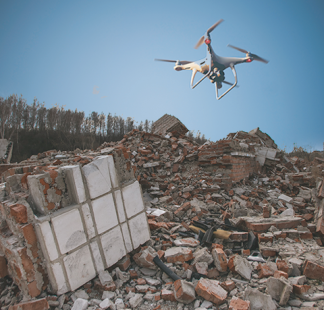- Jonathan Mwakijele
- Annitah Rodah Natwati
Introductory
- Bank transfer
- Credit card
- M-pesa
Description
This course provides a comprehensive overview of spectrum management for aeronautical and radio determination services, including both commercial and military domains. Participants will gain a deep understanding of aeronautical systems, spectrum regulations, and practical spectrum management skills.
Through interactive lectures, practical exercises, and case studies, participants will develop the expertise to address complex challenges in aeronautical spectrum management.
This course is designed for professionals involved in spectrum management for aeronautical services, including:
- Regulators from national telecommunication authorities
- Spectrum managers from civil aviation authorities
- Military spectrum managers
- Engineers working in aeronautical communication systems
Participants should have a basic understanding of:
- Radio spectrum concepts
- Radiocommunication services
- International Telecommunication Union (ITU) Radio Regulations
Upon successful completion of this course, participants will be able to:
- Identify different types of commercial and military aeronautical systems.
- Describe the navigation and communication (NAVCOM) requirements for aircraft.
- Explain the role of ground-based and satellite-based systems in aeronautical services.
- Differentiate between the Aeronautical Mobile Radio Service (AMRS) and the Radio Determination Service (RDS).
- Analyze the role of the International Civil Aviation Organization (ICAO) and ITU in aeronautical spectrum management.
- Describe the importance of spectrum coordination and harmonization for aeronautical systems.
- Apply their knowledge to spectrum planning exercises for aeronautical services.
- Evaluate potential sources of harmful interference on the aeronautical spectrum.
This course will combine the following elements
- Interactive lectures every week on Monday, Wednesday and Friday from 1500 hours to 1700 hours EAT.
- Practical exercises to reinforce key concepts and apply knowledge to real-world scenarios.
- Group discussions to encourage information sharing and collaboration.
- Case studies to explore real-world challenges and solutions in aeronautical spectrum management.
- Self-study assignments to deepen understanding of complex topics.
Participants will be assessed through a combination of methods:
Weekly Quiz (4) 40%
Weekly Forums (4) 20%
End of course assignment (1) 40%
A total score of 70% or higher is required to obtain the ITU certificate.
Week 1 / Monday
Introduction to Aeronautical Systems
Learning Outcomes
Understand the different types of aeronautical systems, their components, and operational principles.
Activities
Interactive lecture, multimedia presentations, case studies.
Week 1 / Wednesday
Navigation and Communication Requirements
Learning Outcomes
Explain the essential navigation and communication needs for aircraft, including both commercial and military operations.
Activities
Interactive lecture, group discussions, guest speaker.
Week 1 / Friday
Week 1 Recap
Learning Outcomes
Review key concepts, answer questions, and discuss potential challenges.
Activities
Online quiz, Forum Discussion.
Week 2 / Monday
Ground and Satellite-Based Aeronautical Systems
Learning Outcomes
Describe the role and function of ground-based and satellite-based systems in supporting aeronautical operations.
Activities
Interactive lecture, multimedia presentations, case studies.
Week 2 / Wednesday
ICAO and ITU Roles in Spectrum Management
Learning Outcomes
Explain the roles of ICAO and ITU in regulating and managing the aeronautical spectrum.
Activities
Interactive lecture, group discussions, guest speaker.
Week 2 / Friday
Week 2 Recap
Learning Outcomes
Review key concepts, answer questions, and discuss potential challenges
Activities
Online quiz, Forum Discussion.
Week 3 / Monday
Aeronautical Spectrum in Radio Regulations
Learning Outcomes
Understand the allocation and utilization of the spectrum for aeronautical services as outlined in the ITU Radio Regulations.
Activities
Interactive lecture, group exercises, case studies.
Week 3 / Wednesday
Propagation Models and Technical Planning
Learning Outcomes
Explain the principles of radio wave propagation and their impact on aeronautical systems. Discuss spectrum planning methodologies
Activities
Interactive lecture, simulations, group projects.
Week 3 / Friday
Week 3 Recap
Learning Outcomes
Review key concepts, answer questions, and discuss potential challenges.
Activities
Online quiz, Forum Discussion.
Week 4 / Monday
Spectrum Coordination and Harmful Interference
Learning Outcomes
Understand the importance of spectrum coordination and the challenges posed by harmful interference
Activities
Interactive lecture, case studies, group discussions.
Week 4 / Wednesday
Emerging Technologies and Future Trends
Learning Outcomes
Explore the impact of new technologies (e.g., drones, satellite communication) on the aeronautical spectrum.
Activities
Interactive lecture, panel discussions, guest speakers.
Week 4 / Friday
Course Wrap-up and end of course assignment submission
Activities
Complete the final project and submit it. Participate in a course wrap-up session.
End of course assignment submission
Course feedback.











